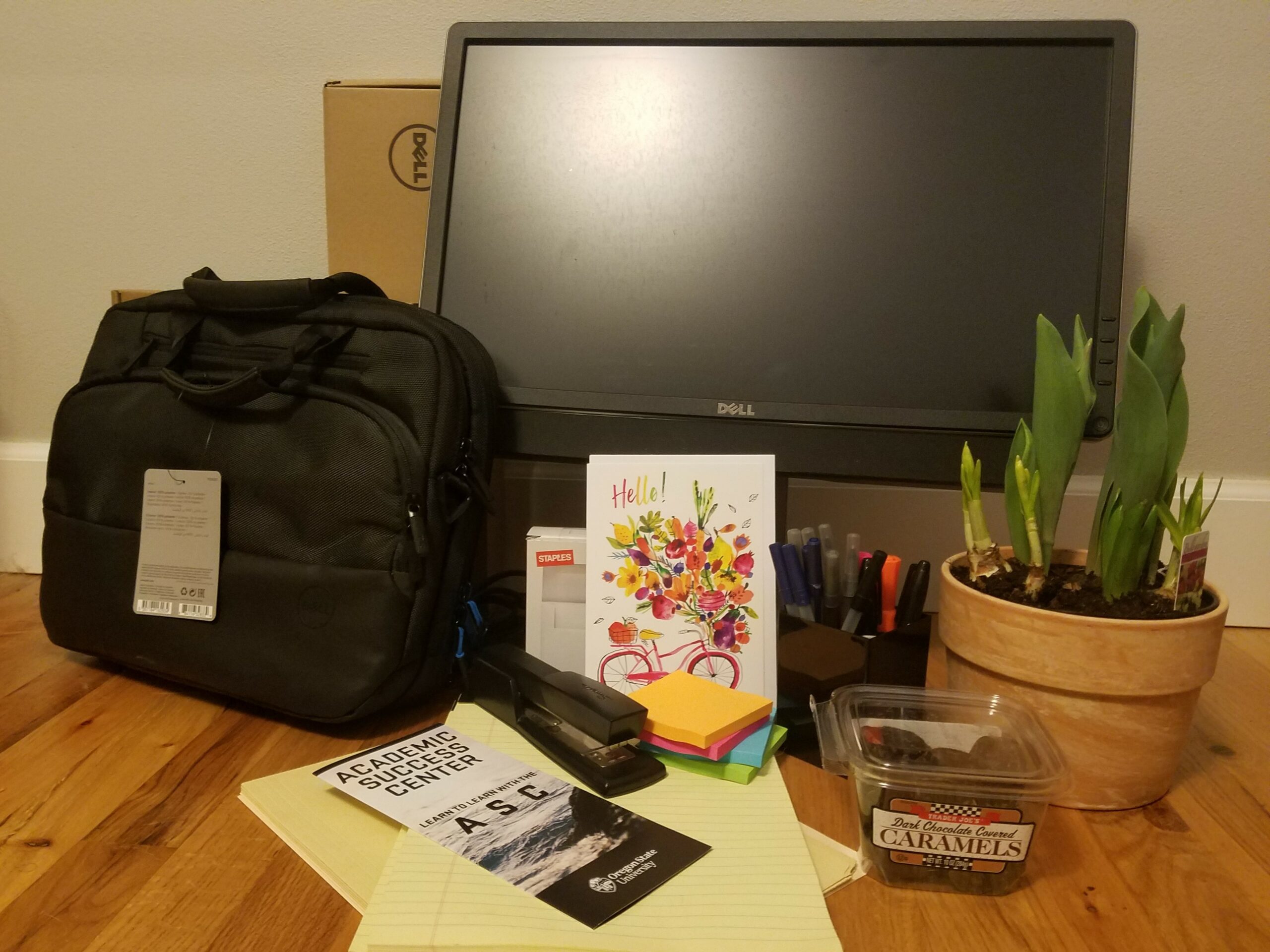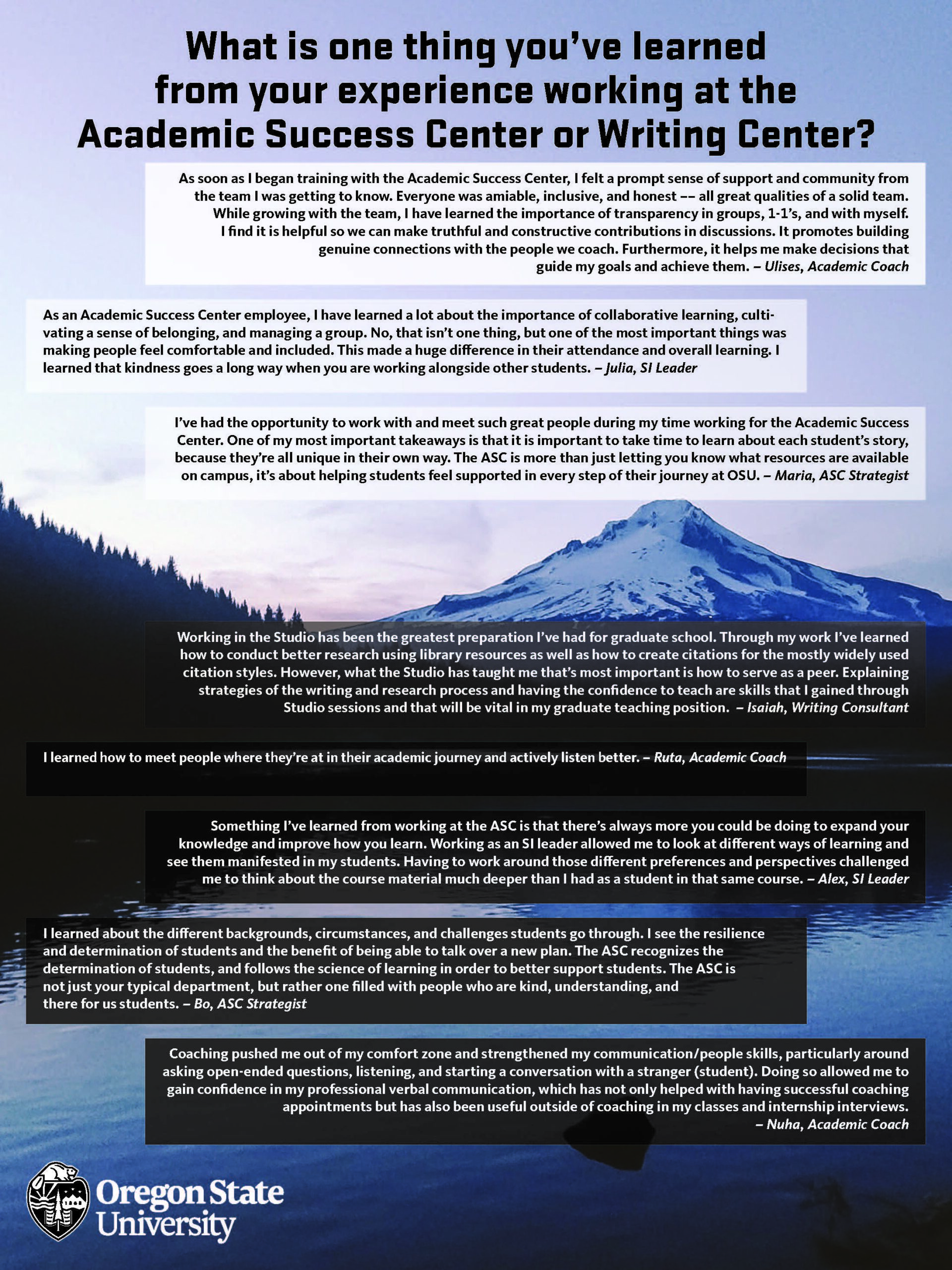by Anna Bentley
Starting a new job is always exciting, nerve-wrecking, and full of anticipation. The last time I started a new job, I set aside what I would wear, programmed the coffee maker, and packed my lunch the night before. I set my alarm extra early because I didn’t know how long it would take me to get through traffic, find parking, and walk to my office. I wanted to set myself up for success and make a good impression on my first day.
That was before the pandemic. Starting a new job looks different when your entire team works remotely, and your commute is to your living room. I joined the Academic Success Center and Writing Center (ASC & Writing Center) as the Administrative Program Assistant in January 2021, and this remote experience has been overwhelmingly positive, which I attribute to thoughtful preparation and design of the onboarding process, as well as strategies I employed to make the most of the first few weeks in my new role. Here’s what I believe made my onboarding experience a positive one.
My supervisor prepared for my arrival weeks in advance
During my interview, Clare and I talked about what  working from home looked like for the ASC & Writing Center and what tools and support were available for the team’s success. After I accepted the job offer, she emailed me to see what technology I needed. When we met for the socially distanced technology hand-off, I was delighted to find that she provided not only my basic needs (laptop, notepads, and pens) but also included a hand-written note, chocolates, and even a plant. That gesture made me feel so welcome and valued before I even started my first day.
working from home looked like for the ASC & Writing Center and what tools and support were available for the team’s success. After I accepted the job offer, she emailed me to see what technology I needed. When we met for the socially distanced technology hand-off, I was delighted to find that she provided not only my basic needs (laptop, notepads, and pens) but also included a hand-written note, chocolates, and even a plant. That gesture made me feel so welcome and valued before I even started my first day.
We prioritized building relationships remotely
From day one, it was clear that Clare wanted to create a genuine, welcoming experience for me. We had 30-minute check-ins every morning during my first few weeks, and she arranged a drop-in Zoom meet-and-greet for campus partners. I also connected individually with each member of our team to get to know them and how my role connected with their work. I found that building relationships remotely requires intentionality and a willingness to try new communication modalities. Spontaneous conversations in the breakroom might not exist at the moment, but a quick check-in via Teams chat can go a long way towards building a sense of belonging over time. When we feel like we belong and trust our colleagues, we collaborate more and have the courage to take creative risks.
I found my place in meaningful ways
In-person work experiences involve orienting new employees to physical spaces. For me, remote onboarding seemed to place greater emphasis on connecting to ideas, values, organizations, and philosophies. Instead of spending my first day getting a tour of Waldo Hall, Clare connected my work to the unit’s programs, the Division of Student Affairs Strategic Priority, OSU’s mission, and the history and values of the student affairs profession. Instead of introducing me to folks near my workspace, as is typical of an on-site experience, I was connected to campus partners who shared how they collaborate with our unit. While I look forward to an orientation to the physical space as well, I appreciated finding my place in the work in these meaningful ways.
I took an active role in my onboarding experience
Starting a new job can be intimidating. There’s so much to learn, and a lot of us are afraid to mess up. But taking initiative during your first few weeks can be empowering – and a gift to your team. Instead of waiting for tasks to come to me, I was intentional about reaching out, asking how I could help, and keeping an eye open for projects. I tried to speak up and share my opinions, even if it scared me. In times when my confidence was shaky, I reminded myself that I am an expert in my experiences and that my perspectives are valid. Most importantly, I communicated my needs throughout my onboarding process.
This onboarding experience continues to be the best of any job I’ve had, which I credit to the thoughtful preparation and genuine interest in my success. If you’re hiring or onboarding new employees, I invite you to consider how you might design a welcoming, inclusive, and empowering experience for them. And if you’re the new employee, I encourage you to take an active role in your experience, have grace with your supervisor and colleagues, and be intentional about building relationships within your organization.

